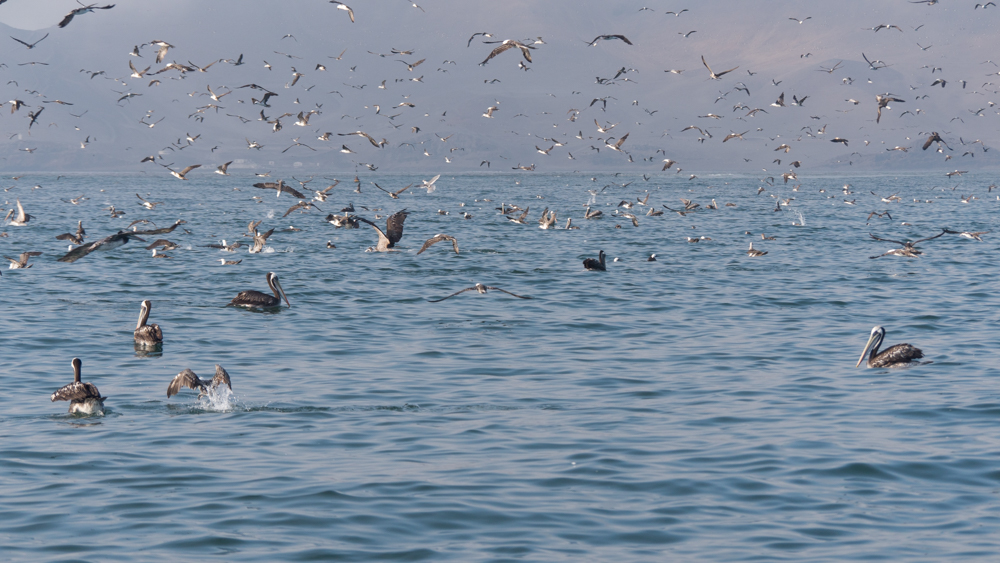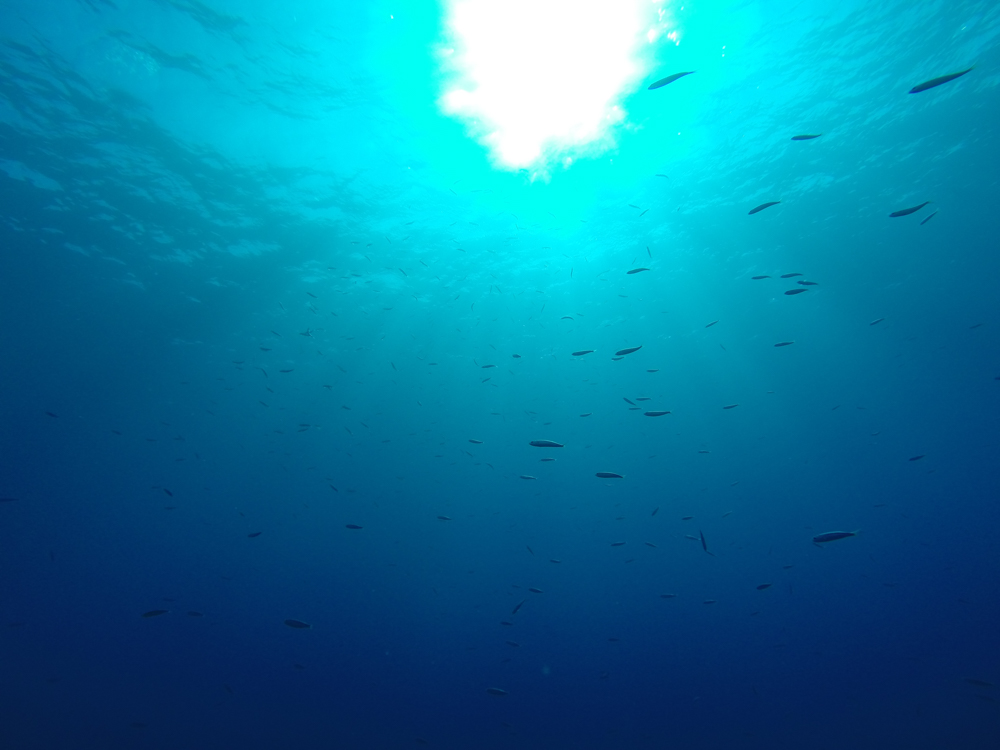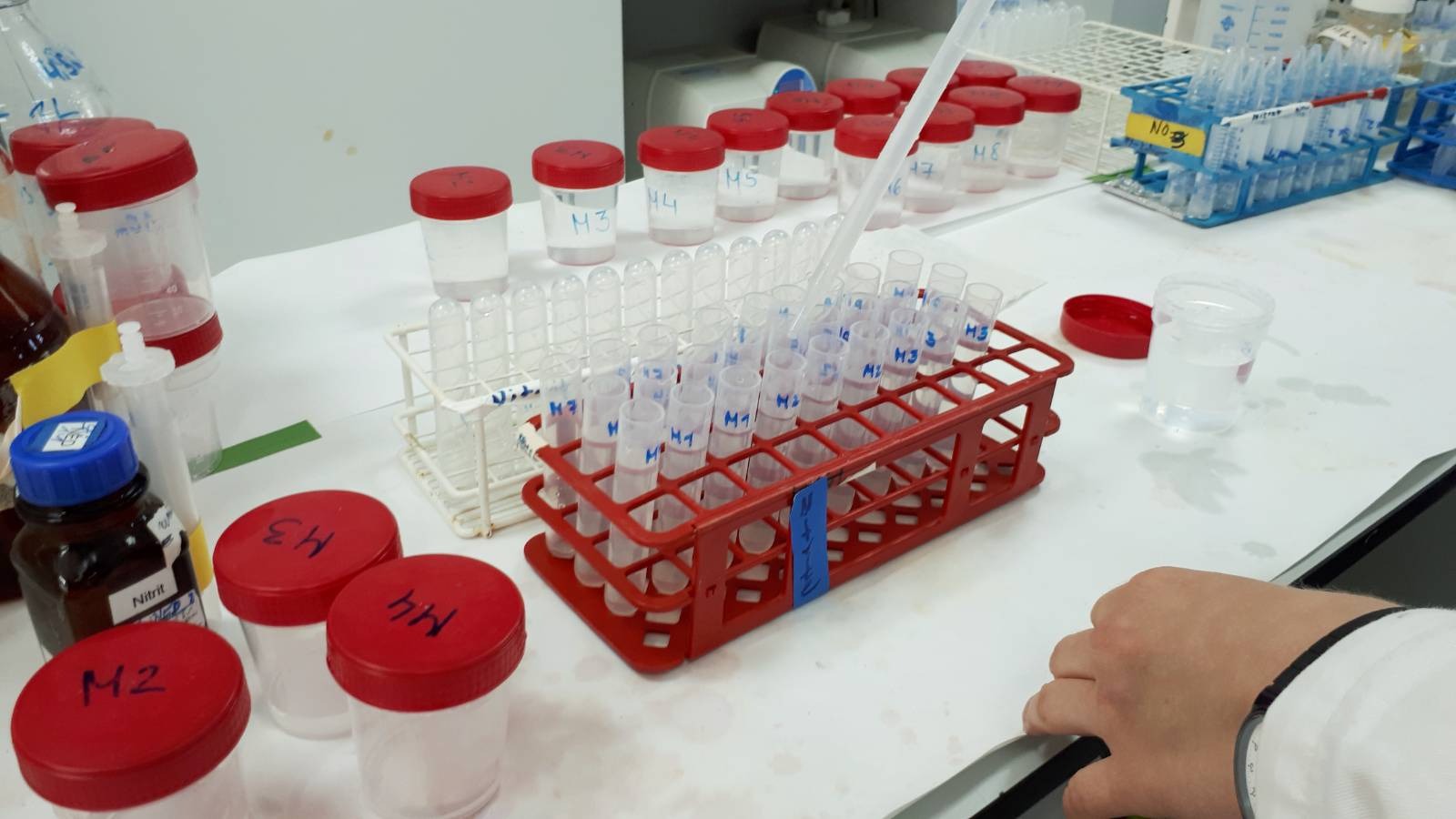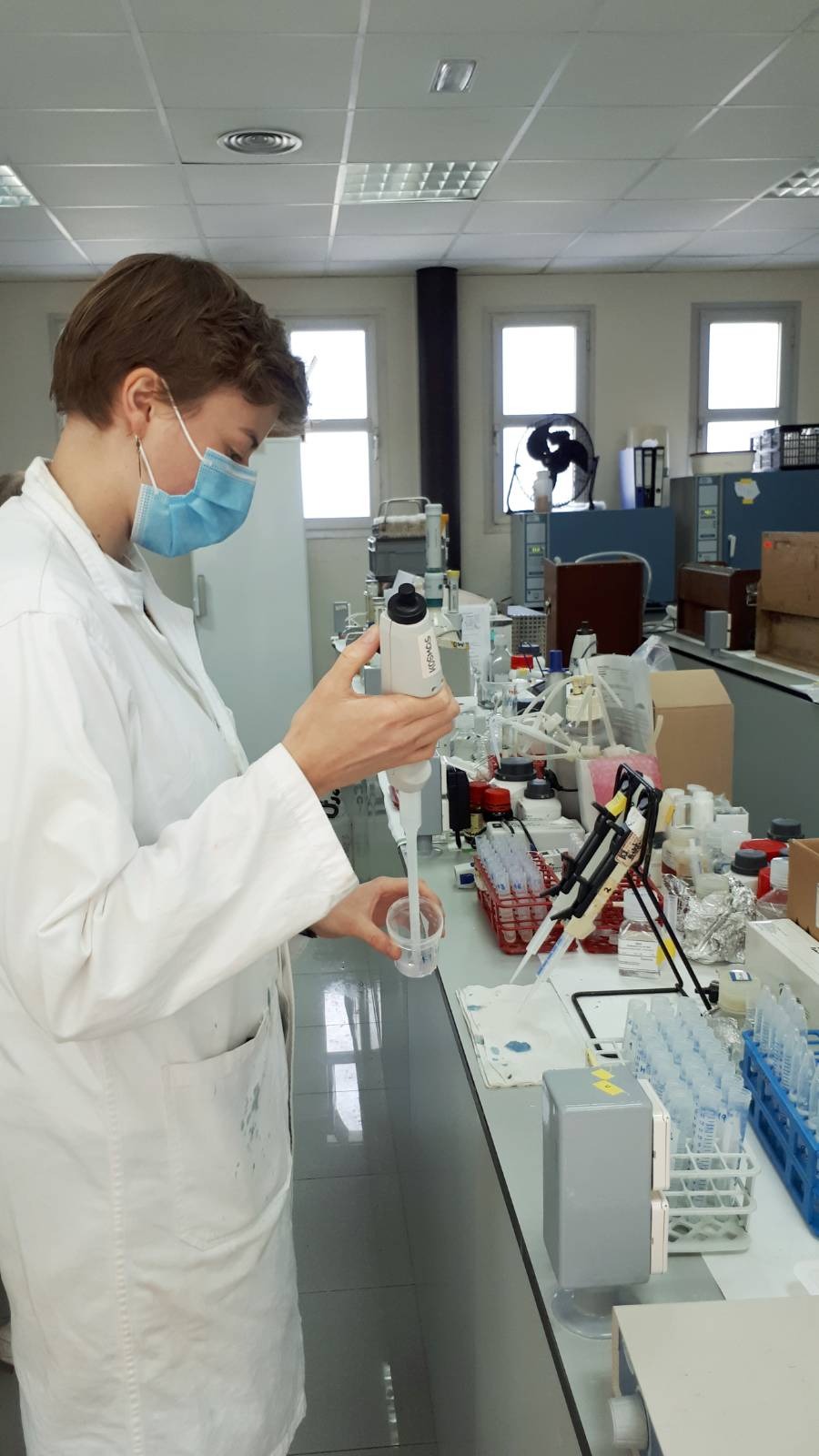Nutrients are an essential part of every food web. Every organism on Earth needs nutrition to build up amino acids, proteins, enzymes etc. It is necessary to maintain the integrity of every cell.
In the ocean, there are three major inorganic nutrients, which are important for marine primary production, but also often limited in supply: nitrate, phosphate and silicate. Microscopic algae take up these nutrients and use them to produce biomass, so called primary production as it is the base of the food chain. This biomass can then be transferred up the food chain to higher trophic levels like little crustaceans (e.g., copepods) and further up to fish, birds and marine mammals. As you may have already derived from this, it is possible to make assumptions on the productivity and the status of a marine system just by looking at the availability of nutrients.
In some places in the ocean, we can find high nutrient concentrations in the water column, such as the Humboldt Upwelling System off Peru, where strong mixing of the water column leads to nutrient rich deep water brought back to the light flooded surface and thus primary production through photosynthesis can take place.

But there are also systems where the availability of nutrients is very low, e.g., around the Canary Islands. Our experiment takes place on Gran Canaria, one of the Canary Islands and here we have to deal with very low nutrient concentrations, so called oligotrophic conditions, in the surface layer of the ocean. This is because Gran Canaria is situated at the edge of the subtropical North Atlantic gyre, where the wind system prevents upwelling of nutrient rich deep water. Furthermore, high solar radiation leads to high surface water temperatures and the water column becoming stratified. Since there is less mixing, the light flooded surface layer is isolated from the nutrient rich deep water and consequently, the surface layer runs out of fresh nutrients which in turn reduces its productivity.

I’m a student of the master program Biological Oceanography and together with Peter, an experienced lab technician, I’m – as you may have already guessed – responsible for the analysis of nutrients during our experiment. After 1.5 years of online learning, it is wonderful to be back in the lab and to learn by actually doing science.
Every sampling day, Peter and I get water samples from the mesocosms and we analyse the respective nutrient concentration by using photometric approaches. This means that we dye the nutrients in the water sample and then determine the concentration by the colour intensity, as more nutrients means more reaction with the dye and therewith a stronger colour intensity.

After measuring the nutrient concentrations in the lab, we analyse our results by e.g., looking for significant differences between the mesocosms as an indication for different productivity states. In case we identify any differences, we try to find reasons and explanations for that – the detective work begins: Is the difference caused by our alkalinity treatment or are there any other possible reasons? And do we find the same pattern when we look at other parameters like chlorophyll or phytoplankton abundance, which could indicate differences in the food web?
In the end, all data will be brought together to look at the big picture. But to make definite statements about the outcome of our experiment further measurements back in Kiel and several months of data analysis are needed.
Author: Juliane Tammen
